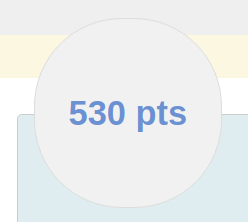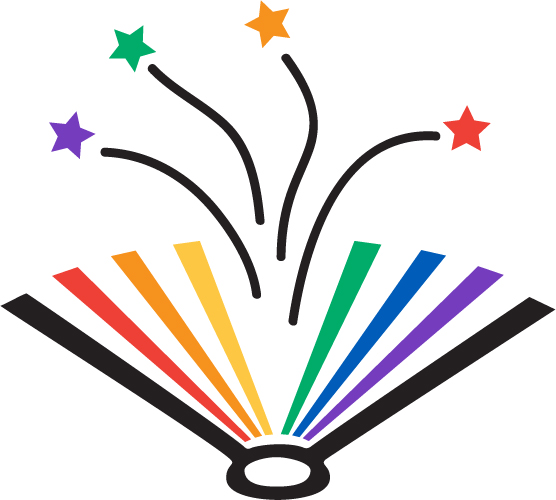On the previous page, we enhanced an existing traditional program by awarding the reader a digital badge for each book they read. The resulting table showed how the reader progressed through the summer reading program, earning books, prizes, and raffle tickets.
Notes about "Points" and "Activities"
 You may have noticed earlier that the BookPoints interface displays how many "points" that a Reader has earned. BookPoints gives patrons points when they enter reading log entries. Here's how this works:
You may have noticed earlier that the BookPoints interface displays how many "points" that a Reader has earned. BookPoints gives patrons points when they enter reading log entries. Here's how this works:
- For each reading program, you can choose how many points to award per book, minute, page, or hour entered in the reading log. For example, you may set your Pre-Reader program to reward readers for each minute they spend reading, but you may set your Teen and Adult program to reward readers for every book they enter. You can set each program to be different or make them all identical.
- When you set up each program, you decide how many points it takes to earn a badge, prize, or drawing ticket.
- When you add an Activity or a Secret Code, you CAN choose to award points for those activities and codes -- if so, those points will count toward badges and prizes just like reading.
Some libraries prefer this "reading plus activities" approach to summer reading. Alternatively, you can award 0 points for activities and codes -- if so, readers will only earn points by reading. This is the "reading-only" approach. You can still award badges for activities and codes as an incentive, even if you don't award points.
Example of "Reading Plus Activities" Program:
Every book is worth 100 points. Activities are worth 50 points. Goal is 1000 points. The reader could read 10 books to achieve their 1000 points, or the reader could read 9 books (900 points) and complete 2 activities (50 points x 2 = 100 points) to achieve their 1000 points.
Example of "Reading-Only" Program:
Every book is worth 100 points. Activities are worth 0 points. Goal is 1000 points. The reader can only reach 1000 points by reading 10 books. They can still complete activities for fun and to earn a digital badge, but the activities will not count toward their 1000-point summer reading goal.
Now that we understand points, let's talk about "Levels."
"Levels" = Progress
When building a summer reading program, we use the term "levels" to indicate the progress that an individual Reader has made toward their goal. During the Setup phase, you will define the "Levels" for each program, building the "ladder" that Readers will ascend. Let's look at an example:
Example Pre-Readers Program: Pre-Readers earn 1 Point for every Minute they read. The summer goal is 600 Minutes (10 hours). We want to award a digital badge for every 60 points (60 minutes, 1 hour) entered. We also want to award a physical prize when the Reader completes their 600 Minutes. We also want to award UP TO two raffle tickets: one after 300 minutes, one after 600 minutes.
Level 0: every reader begins at level 0, with 0 points, because they haven't entered any reading log entries. We award every Reader a "Starter Badge" when they sign up to help incentivize them.
Level 1 (60 points): the Reader has completed 60 minutes of reading. Award badge #1.
Level 2 (120 points): the Reader has completed 120 minutes of reading. Award badge #2.
Level 3 (180 points): the Reader has completed 180 minutes of reading. Award badge #3.
Level 4 (240 points): the Reader has completed 240 minutes of reading. Award badge #4.
Level 5 (300 points): the Reader has completed 300 minutes of reading. Award badge #5. Also award 1 raffle ticket.
Level 6 (360 points): the Reader has completed 360 minutes of reading. Award badge #6.
Level 7 (420 points): the Reader has completed 420 minutes of reading. Award badge #7.
Level 8 (480 points): the Reader has completed 480 minutes of reading. Award badge #8.
Level 9 (540 points): the Reader has completed 540 minutes of reading. Award badge #9.
Level 10 (600 points): the Reader has completed 600 minutes of reading. Award badge #10. Also award the physical prize. Also award 1 raffle ticket.
You can have an unlimited number of levels. One library wanted to incentivize readers to read up to 60 books! They created 60 digital badges, and 60 levels, and awarded a badge for each level.
In the next section, we'll complete a Program Planning Worksheet to document a program in preparation for entering the program in BookPoints.


